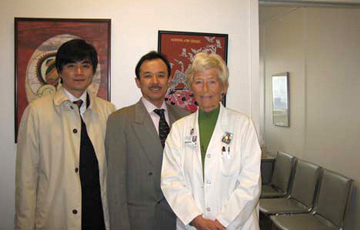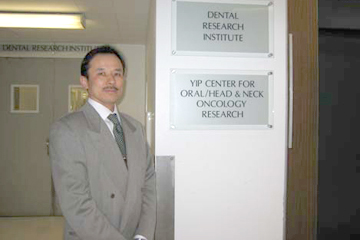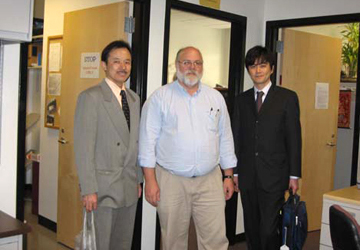“Increasing Effectiveness of International Student Graduate Education”: Fact-finding Visits to Three American Universities (International Course for Oral Life Science)
- Period of Visit:
- Monday, January 29-Saturday, February 4 2006
- Sites Visited:
- University of California, San Francisco (UCSF)
University of California Los Angeles (UCLA)
University of Southern California (USC) - Visiting Group Members:
- 2 Instructors: Prof. Isao Saito & Noritaka Fuji (Lecturer)
- On-site Contacts:
- 1.UCSF(Jan. 30th, 11:00〜):
- Karin Vargervik - Professor of Orthodontics, Craniofacial Anomalies; Caroline Damsky - Associate Dean for Academic Affairs; Grayson Marshall-Chair, Division of Biomaterials and Bioengineering
- 2.UCLA(Feb. 1st, 13:00〜):
- George Bernard Professor Emeritus, Oral Biology, Graduate Student Education
- 3.USC(Feb. 2nd, 9:00〜):
- Charles Shuler - Professor, Director of the Graduate Program in Craniofacial Biology
PhD Program Outlines
- 1.UCSF (ref. materials 1-3):
- There are 5 paths doctoral candidates can take (ref. 2) including a joint DDS/PhD Dental Scientist Training Program, the full completion of which requires at least 7 years of education. However, the exact length of the program can depend on the field of the research project chosen as per PhD requirements. The graduate school's academic year is divided into 4 quarters: Spring, Summer, Fall and Winter. Thus students have access to variety of possibilities in fulfilling the basic course requirements needed for further research. Also, before being permanently assigned to a specific research laboratory, students are given the option of doing a rotation of the various laboratories. (ref. 3)
Annual academic evaluation is performed by a group comprising of the student's graduate advisor and 4 other members of the graduate school faculty. Final evaluation is performed by a 4 member Thesis Committee comprised of the student's advisor and 3 other graduate school faculty members.

Prof. Karin Vargervik
- 2.UCLA (ref. materials 4, 5):
- implements a system of study similar to that of UCSF. Earning a PhD requires a standard period of 4-5 years including fulfillment of mandatory coursework. After such coursework is completed candidates must pass a qualifying exam to advance. Program candidates must also sit midterm examinations, submit a written dissertation, and pass a final oral assessment to graduate. Coursework is comprised of 5 core courses which students in the DDS/PhD program take in their 4th and 5th year of study. Also, once a primary field of research has been decided, a student must, under the supervision of his or her faculty advisor, select an elective course. Rotation between the various laboratories takes place in the 1st year and sometime before completion all program candidates must complete a quarter as a teaching assistant. Through their experience as teaching assistants, students pick up valuable teaching experience while serving to support faculty members.

In front of the UCLA Dental Research Institute
- 3.USC (ref. material 6):
- The PhD program at USC was first established 30 years ago, program contents do not differ greatly from those of the two schools listed above. Coursework includes 4 core courses and 4 elective courses. Core courses are not limited only to dentistry, but include courses in general medicine and engineering that are taken together with graduate students from different study areas. Though time required to complete the PhD program depends on the subject area picked by the candidate, the average program takes 4-5 years. Coursework is completed during the first 2 years and remaining 3 or so years is reserved for research in a selected laboratory. Evaluation is similar to other universities, comprising of a comprehensive examination after the completion of core coursework which candidates much pas to proceed to the research phase. As for mid-program evaluation, the first phase consists of written examination and a review of research protocol. The second phase consists of a review of theses composes and the 2-3 scientific journal articles submitted by a 5 person review panel led by the faculty advisor with 2 members of the USC faculty and 2 members from another institution. At present 24 candidates are enrolled in the Biomedical and Biological PhD program, with an average graduation rate of 3-5 graduates a year. Also, every 7 years the program undergoes a third party audit evaluation and sections are changed if found to require reform.

Prof. Charles Shuler
 Initiatives for Attractive Education in Graduate Schools
Initiatives for Attractive Education in Graduate Schools






